-
The 2012 U.S. Senate Races That Will Determine Who Controls the Senate

Tilting the toss ups — ranking toss-up Senate races from most likely to go Republican (top, dark red tint) to most likely to go Democratic (bottom, dark blue tint)
Larry Sabato et. al have the analysis here.Ah, the Senate. The battle for control fascinates us — and all election observers — because there are so many intriguing races and personalities. Yet, as we update our ratings today and move in a new direction on Congress’ upper chamber, it is worth stressing at the outset that no party will truly control the Senate come January 2013. There is no chance at all that Democrats or Republicans will hit the magic 60 seats required to break filibusters and thus run the Senate. Increasingly, it looks likely that the winning party will have a smaller majority than the Democrats do now (53 seats) — if there is a majority at all. The tiny margin for the winning party will enable the new Senate to do what Senates do best: a whole lot of nothing (discounting talk, of course).
I pretty much agree with their analysis. They deliver a good race by race analysis and it is worth the time to read.
The Senate races in Virginia and Nevada intrigue me and will be fiercely fought since they are key battleground states for the Presidency. If the GOP nominee, beats Obama in the state, then the Senate seat will likely go red.
In any event, there will not be a 60 vote majority obtainable by either party. So, the only people that will really care will be Harry Reid, Mitch McConnell and their staffs.
-
Poll Watch: Americans Favor Keystone XL Pipeline
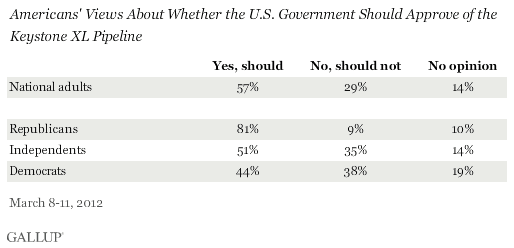 According to the latest Gallup Poll.
According to the latest Gallup Poll.A solid majority of Americans think the U.S. government should approve of building the Keystone XL pipeline, while 29% think it should not. Republicans are almost twice as likely as Democrats to want the government to approve the oil pipeline. About half of independents also approve.
These data were collected as part of Gallup’s annual Environment survey, conducted March 8-11, 2012. The Keystone XL oil pipeline is a politically divisive project, which President Obama and the Republicans in Congress have been battling over. The proposal from TransCanada Corporation for building a pipeline to carry crude oil from Canada down to the Gulf of Mexico, first made in 2005, needs approval from the U.S. president because it crosses an international border. The Republicans in Congress inserted a provision on the pipeline in the payroll tax extension bill late last year, but in January, President Obama rejected TransCanada’s permit entirely. However, the administration is allowing TransCanada to reapply for the permit it needs.
The pipeline would travel through the Midwest and the South, and Americans in those two regions are the most likely to approve of the project. Nearly 7 in 10 Midwesterners want the government to approve the building of the pipeline and 61% of those in the South do as well. There has been discussion in Washington and in the media about the potential new jobs the pipeline project would create, which may partly explain the higher support seen in those regions. Americans in the West and East are less likely to approve.
With rapidly rising gasoline prices, President Obama has become very sensitive to this particular pipeline. Unfortunately, while in Oklahoma today, this particular segment of the Keystone XL Pipeline has NOTHING to do with his previous refusals of approval. But, he has hedged his bets but allowing resubmittals.
So, why is the President having an apparent about face on this issue?
Why it is the election – duh!
President Obama this week set out on a two-day multistate trip to promote his energy strategy, including reducing America’s dependence on foreign oil. As part of his trip, Obama on Thursday will visit Cushing, Okla., the place where the southern portion of the Keystone XL pipeline would begin. There he will announce that his administration will expedite the permit process for the southern half of the pipeline, which does not need his specific approval.
TransCanada says this part of the pipeline will help it relieve a bottleneck of oil in Oklahoma. But Republicans in Congress have already criticized the president’s yet-to-be-made announcement, with a spokesman for House Speaker John Boehner telling MSNBC it is an “attempt to take credit” for the pipeline, and that the southern part “is being built in spite of the president, not because of him.”
Regardless, the northern part of the pipeline, which does require the president’s approval, has still not been approved. The majority of Americans, though, say they want the government to allow the pipeline to be built. So, most would likely support any attempt by the president to move the pipeline forward.
If gasoline prices continue to rise, watch the radical environmentalists give Obama a “pass” on this pipeline and it will be approved.
Why?
See the polling results above, go over to Gallup and read more detailed polling results.
I am not too cynical, am I?
-
CA-26 Poll Watch: Linda Parks Beating Democrats in June Primary AND Tony Strickland in November
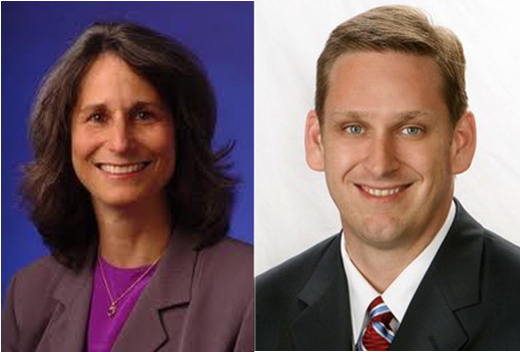
Ventura County Supervisor Linda Parks (NP) and California State Senator Tony Strickland (R)
According to a new poll released by Timm Herdt at the Ventura County Star.There’s a very long way to go between here and there, but as the campaign season gets under way, Supervisor Linda Parks of Thousand Oaks has a very good chance of making history this year as independent running for Congress. Which is another way of saying that she could actually win.
That conclusion is based on a poll conducted by Parks’ campaign team of Gorton Blair Biggs International, headed by former Pete Wilson strategist George Gorton, whose storied career in political consulting includes a tie-in with Watergate as a youth-vote adviser to President Richard Nixon’s 1972 presidential campaign (he paid someone to spy on anti-war protesters) and a major role in helping to elect Boris Yeltsin as president of the Russian Federation (the film “Spinning Boris” was based on that, with Jeff Goldblum playing the role of Gorton).
Parks’ team yesterday shared with me a polling memo in the 26th Congressional District. Although short on details of the actual poll, the memo makes three things clear: Parks is now running in a strong second place in the primary, none of the four Democratic candidates is particularly well known, and that the Thousand Oaks supervisor has a statistically significant lead in a hypothetical November matchup against Republican Tony Strickland.
Some details: The poll surveyed 361 likely primary voters from Feb. 26-28 and has a margin of error of plus or minus 5 percent. The results, according to the memo, show Parks in a “strong second place” in the primary. If she were to finish second, the polling results (weighted to reflect the expected partisan makeup of a general election turnout) show her leading Strickland 42.6 percent to 35.5 percent in a head-to-head race in November.
Granted the race is in the early stages and this is a proprietary poll.
But, there are some lessons here for Republicans and Democrats.
If the Democrats wish to have a nominee in the general election, they had better coalesce around one candidate and that candidate is likely California Assemblywoman Julia Brownley. Why there are four democrats running in this race and why a democrat incumbent in Congress, namely Rep Brad Sherman, did not run in this marginally Democratic Congressional District is anyone’s guess.
For the Republicans to hold retiring Rep Elton Gallegly’s seat, they will have to broaden their base and campaign heavily in Latino-centric Oxnard. Tony Strickland cannot allow the Ventura County Public Employee Unions and other unions to run rough-shod over him in Republican voter deficit City of Oxnard and to some degree Ventura.
Linda Parks will win some Republican votes in Thousand Oaks and Westlake Village, Strickland cannot rely on large margins there – which he ahs enjoyed in the past.
But, again, this race is early and the Democrats will surely start attacking Parks soon.
If not, then Strickland better get a new pair of shoes and start walking the streets of Oxnard and Ventura early.
-
President 2012 Poll Watch: In North Carolina President Obama Leading Republican Field
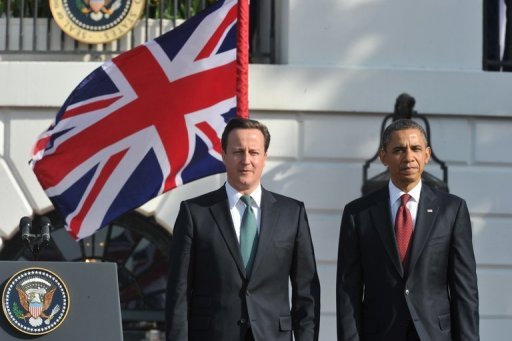
British Prime Minister David Cameron and President Obama today at the White House
According to the latest PPP poll.Whoever the Republican nominee is Barack Obama has an advantage over him right now. Obama leads Romney by 3 points, 49-46. That’s up from a 1 point lead a month ago. And Obama’s ahead of Santorum by 5 points, 49-44. That’s up from a 2 point lead in February. Obama’s up 48-41 on Ron Paul and 51-42 on Newt Gingrich.
Obama’s breaking even on his approval numbers in the state with 49% giving him good marks and 49% poor ones. This is the first time since last June Obama hasn’t been under water in North Carolina. Obama hit a low water mark in September 43/53. He’s seen modest improvement with Democrats and Republicans since then, but the really big shift is with independents. He’s gone from 31/62 with them to 46/51- they’re still not fond of him but he’s coming a lot closer to breaking even now than he did six months ago.Part of Obama’s good numbers in North Carolina are a function of his own improved popularity, but he’s also benefiting from the poor image of his opponents. As we’re finding in most swing states Mitt Romney is very unpopular with only 31% of voters seeing him favorably to 56% with a negative opinion. Rick Santorum doesn’t do much better- his favorability spread is 36/52.
In this key battleground state, the GOP candidates are under-performing against a weakened incumbent President.
I would think here we have another example of why the Republican Party would be well suited if none of the current candidates were able to win a majority of nomination delegates. Then, the Republican Party could make another choice at the August convention.
The entire poll is here. -
President 2012 GOP Poll Watch: Romney’s Lead Decreases – Republicans Want Santorum and Gingrich in the Race
 While we await tonight’s GOP primary results in Alabama and Mississippi, we can digest these poll results from Gallup.
While we await tonight’s GOP primary results in Alabama and Mississippi, we can digest these poll results from Gallup.Gallup Daily tracking of the GOP race based on interviewing conducted March 8-12 shows that Romney continues to be Republicans’ first choice for their party’s nomination, but by a smaller margin than has been the case in recent days. Going into Tuesday night’s Southern primaries, Romney now has 32% support nationally, Santorum 27%, Gingrich 17%, and Ron Paul 12%.
Conservatives are most likely to support someone dropping out, but by and large most Republicans I talk to want the race to play out – with their chance to vote on the matter.
I can only foresee that if Mitt Romney was to win both elections tonight, there will be a call for both Santorum and Gingrich to drop out due to Mitt’s inevitability.
I don’t think he will win both tonight, however.
-
Poll Watch: United States Economic Confidence the Best in Four Years
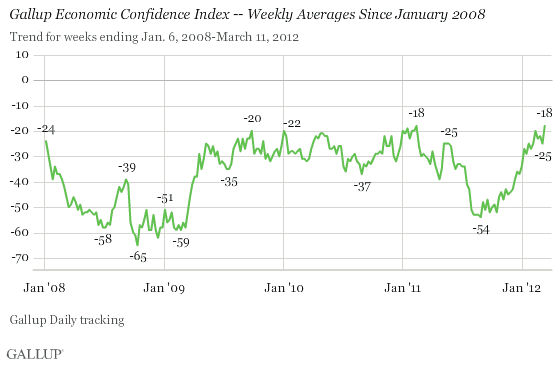 According to the latest Gallup Poll.
According to the latest Gallup Poll.U.S. economic confidence improved sharply to -18 in the week ending March 11 from -25 the prior week — the highest since the week ending Feb. 13, 2011, when it was also -18. The -18 readings this year and last are the highest weekly levels Gallup has recorded since it started tracking confidence daily in January 2008.
Americans’ economic confidence had declined recently from -20 in the week ending Feb. 12 to -25 for the week ending March 4. This brief deterioration in confidence may have been, at least in part, a response to increasing gas prices at the pump. However, the government’s positive unemployment report out last Friday appears to have given economic confidence another boost, as seemed to be the case following January’s unemployment report.
Gallup Daily tracking reveals that Americans’ confidence in the economy increased Friday, Saturday, and Sunday after the government report came out.
Read the entire report over at Gallup.
I am feeling better economic conditions in California although unemployment is unreasonably high and the state of California has massive budget deficits. I would say economic conditions are fluid and with rising fuel prices, there are unknowns on the horizon.
If I were President Obama, I would be leery of improving conditions to help in his re-election effort. And, if I were a GOP challenger, I would not be confident that a deteriorating economy would propel you into office.
It is important to note that Americans’ confidence in the economy was similar last year around this time. However, Americans’ hope for improvement in the overall economy during the months that followed the momentary surge in confidence early last year did not materialize. In fact, by last summer, the economy appeared to be near another downturn as politicians in the nation’s capital did battle over raising the federal debt ceiling.
It appears economic confidence is at another possible turning point, with gas prices on a pace to reach record highs in the summer. Further, it is not clear if the government can continue to report more good jobs news given modest economic growth.
For now though, it appears that higher gas prices have not been enough to keep Americans’ economic confidence from matching its highest weekly level in four years. However, if job increases slow, gas prices may quickly be perceived as an even more important threat, not only to Americans’ economic confidence, but also to the overall economy in the months ahead.
-
President 2012 Poll Watch: New York Times/CBS Poll Has Obama at 41 Per Cent Approval
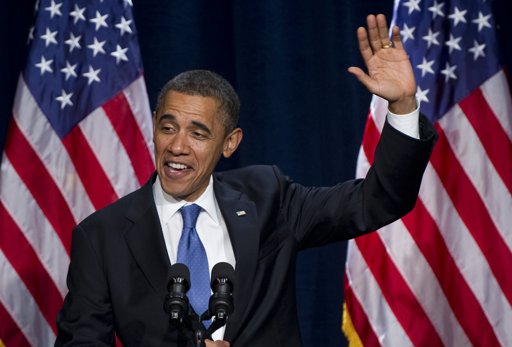
President Obama speaking at a Florida fundraiser in February
Contrary to the Gallup Poll released earlier today, the latest New York Times/CBS poll has President Obama not doing so well.Despite improving job growth and an extended Republican primary fight dividing his would-be opponents, President Obama is heading into the general election season on treacherous political ground, according to the latest New York Times/CBS News poll.
At a time of rising gas prices, heightened talk of war with Iran and setbacks in Afghanistan, Mr. Obama’s approval rating dropped substantially in recent weeks, the poll found, with 41 percent of respondents expressing approval of the job he is doing and 47 percent saying they disapprove — a dangerous position for any incumbent seeking re-election.
The poll provides a statistical reminder of how unsettled and unpredictable this year’s political landscape remains. Just one month ago, Mr. Obama reached a critical benchmark by winning approval from 50 percent of Times/CBS News poll respondents, his re-election prospects lifting along with confidence that the nation was finally emerging from the aftermath of the Great Recession.
Mr. Obama’s approval numbers measure his performance against expectations. But elections are choices between candidates, and on that score, he showed greater resilience in the poll.
In a hypothetical matchup against his most likely Republican opponent, Mitt Romney, Mr. Obama had a 47 percent to 44 percent advantage, a statistical dead heat given the poll’s margin of sampling error of 3 percentage points. Against Rick Santorum, the president drew 48 percent compared with 44 percent. In both cases, the difference between the candidates was slightly smaller than it was last month.
In the head-to-head matchups, Mr. Obama also maintained much of the advantage he had built in the last year among important constituencies, including women, although he lost some support among women over the past month, even as the debate raged over birth control insurance coverage.
Remember what I said with the Gallup Poll.
It is all about the economy and the economy in the key battleground states of Virginia, North Carolina, Florida, Nevada and Ohio.
-
President 2012 Poll Watch: Obama Approval Rate Reaches 49 Per Cent and Trending Upward
 According to the latest Gallup Polling.
According to the latest Gallup Polling.President Barack Obama’s job approval rating rose to 49% in the three-day period from Friday through Sunday, building on an upward trend that began the middle of last week. Obama’s current approval rating is the highest measured since early February, and before that the highest since June 2011.
Gallup’s latest three-day rolling average is based on polling conducted Friday through Sunday, March 9-11, and reflects the impact of the U.S. government’s positive employment report released on Friday. Gallup’s tracking of U.S. economic confidence showed a sharp positive uptick over the weekend, with the overall Economic Confidence Index at -13 and -14 in the three-day rolling averages reported Saturday and Sunday. The -13 average for March 8-10 is the most positive three-day economic confidence average recorded since Gallup began tracking in January 2008. Forty-six percent of Americans now say the economy is getting better, the highest percentage since late 2009. Gallup’s full weekly report on U.S. economic confidence will be published Tuesday morning on Gallup.com.
Here is the weekly average chart:
 And, the weekly approval chart by gender:
And, the weekly approval chart by gender: So, what does this all mean?
So, what does this all mean?Remember, during the Bill Clinton campaign against President Bush the campaign mantra was: It’s the Economy Stupid? Same here – Obama will rise or fall in the polls because of the economy and its trends – either improving or declining.
Americans are perceiving an uptick in the economy today and thereby feel better about President Obama’s job approval.
Remember John McCain and Sarah Palin were making a comeback in 2008, before they were sunk by the Fall economic collapse. President Obama could rise or fall by outside events upon which he has little or no control. Or, on the other hand, by his economic policies that are successful or not.
-
President 2012 Poll Watch: Obama Beating Romney in Four Key Battleground States of VA, FL, OH, NC

According to the latest Rasmussen Poll.President Obama now holds modest leads over Mitt Romney and Rick Santorum in combined polling of key swing states Florida, North Carolina, Ohio and Virginia. The numbers mark a shift from late February when Obama was tied with both candidates in the four states.
Obama is now ahead of the former Massachusetts governor 46% to 42%. Six percent (6%) prefer some other candidate in this matchup, and six percent (6%) are undecided.
The survey of 500 Likely Voters in Florida, Ohio, North Carolina and Virginia was conducted on March 3-8, 2012 by Rasmussen Reports. The margin of sampling error is +/- 4.5 percentage points with a 95% level of confidence.
Without a doubt, Mitt Romney will need to win all of these states in order to deny President Obama re-election.
This poll is something for the GOP to consider before they nominate him or Santorum.
-
Poll Watch: U.S. Unemployment Rate Increases to 9.1 Per Cent

According to the latest Gallup Poll.U.S. unemployment, as measured by Gallup without seasonal adjustment, increased to 9.1% in February from 8.6% in January and 8.5% in December.
The 0.5-percentage-point increase in February compared with January is the largest such month-to-month change Gallup has recorded in its not-seasonally adjusted measure since December 2010, when the rate rose 0.8 points to 9.6% from 8.8% in November. A year ago, Gallup recorded a February increase of 0.4 percentage points, to 10.3% from 9.9% in January 2011.
And, the Underemployment Rate has increased:
Gallup’s U.S. underemployment measure, which combines the percentage of workers who are unemployed and the percentage working part time but wanting full-time work, increased to 19.1% in February from 18.7% in January.
Here is the chart:
 Remember the pundit-accepted unemployment rate threshold required for re-election of the current President of 8%.
Remember the pundit-accepted unemployment rate threshold required for re-election of the current President of 8%.The one exception was when Ronald Reagan was President and the economy was demonstrably improving.
Today, the US. Unemployment rate continues above 8 per cent and it not improving = warning signs to the White House.
All of this in advance of tomorrow’s U.S. government’s release of its unemployment rate numbers. Let’s see if they show the same trend, as some have surmised that the Obama Administration Labor Department is massaging the numbers.
The February unemployment rate the U.S. government reports on Friday morning will be based largely on mid-month conditions. In mid-February, Gallup reported that its U.S. unemployment rate had increased to 9.0% from 8.3% in mid-January. The mid-month reading normally provides a relatively good estimate of the government’s unadjusted unemployment rate for the month.
Assuming the government’s unadjusted rate increases — from its 8.8% in January — to at least match Gallup’s mid-month measurement for February, then the government should also report an increase in the seasonally adjusted unemployment rate for February. If the government’s unadjusted unemployment rate increases to the degree that Gallup’s has from mid-month to mid-month, then the government’s seasonally adjusted unemployment rate could show an even larger increase.
However, the extent of the seasonal adjustment also makes a difference. Last February, the U.S. Bureau of Labor Statistics applied a seasonal adjustment factor of 0.5 points to its unadjusted unemployment rate for the month. If that same seasonal adjustment is applied to Gallup’s mid-month unemployment rate of 9.0%, it would produce a seasonally adjusted unemployment rate of 8.5%. Alternatively, if it was applied to Gallup’s full-month unemployment rate of 9.1%, it would produce a seasonally adjusted rate of 8.6%. Gallup therefore forecasts an increase in the unemployment rate.
Regardless of what the government reports, Gallup’s unemployment and underemployment measures show a substantial deterioration since mid-January. In this context, the increase in unemployment as measured by Gallup may, at least partly, reflect growth in the workforce, as more Americans who had given up looking for work become slightly more optimistic and start looking for work again. So while there may be positive signs, the reality Gallup finds is that more Americans are looking for work now than were doing so just six weeks ago.